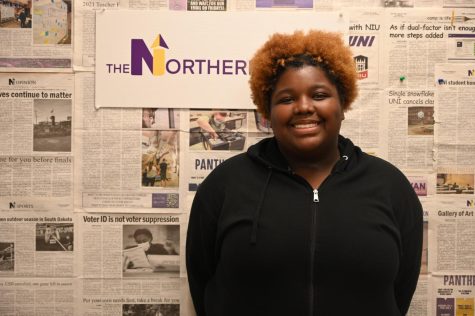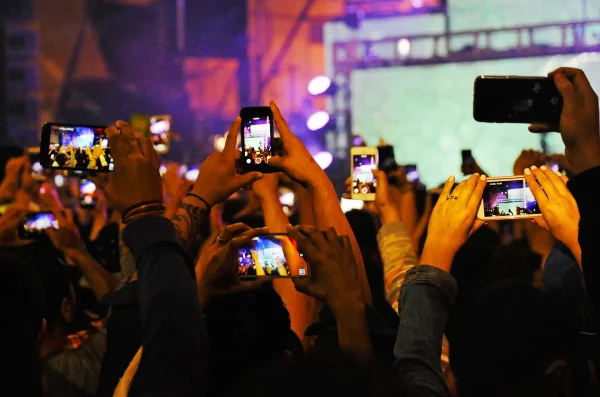Women, life and freedom for Iran
Dec 4, 2022
“Women, Life and Freedom.” These are the words of the Iranian people. These words hold the hope, the dreams, the pain and the fight to avenge, protect and keep the revolution going.
Three words came to life during the funeral for the young Mahsa Amini on Sept. 17, 2022. Today, thousands carry these three simple yet powerful words.
Amini died in a hospital in Tehran, Iran, on Sept. 16, 2022. She was only 22 years old. She was beaten on her way to a detention center days earlier by the morality police following her arrest for an improper hijab according to government standards.
I interviewed a university student of Iranian descent, who gave me her insight on the protests in Iran. “Even outside of Iran, we are not safe, which is why I have chosen to limit the information about myself in this interview.” The Islamic Republic goes to great lengths to punish and threaten those who oppose it.” To protect her identity, the student will be referred to as Raha.
Raha was born in Iran, but lives here in the United States. She makes frequent visits to see her family, who are still in Iran. She says that she “can’t express how awful it feels for Iranians outside of Iran to watch the news… You watch your loved ones continuously live under such harsh and unimaginable conditions.”
“We used to constantly video chat with my grandparents, but due to the inconsistencies with their internet, there have been times where we haven’t heard from them in weeks. I’m constantly worried and stressed about what will happen next,” Raha states.
“The Islamic Republic has used religion to justify all of its violent and forceful behavior for years,” Raha explains. “The protest and the revolution in Iran are not against any religion, but against its government and its dictatorship. The people of Iran are not fighting against Islam or the hijab. People are merely fighting for freedom from their horrendous government; they want freedom of choice and basic human and women’s rights. The lives of those fighting for freedom are greatly at risk.”
She continues, “The Islamic Republic is not just a threat to Iran but to the rest of the world as well. Its government has been linked to many terrorist organizations.”
Iranian celebrities and athletes are not exempt from this treatment either.
Raha says, “The rapper Toomaj Salehi, whose only crime was his lyrics about the corrupted government and for social change, has been arrested.” His condition has been unknown for the last month since he was taken by the Iranian authorities, and they are trying to charge him with crimes which are punishable by death.
It’s been reported by the BBC that at least 15,900 protestors have been arrested since they started in mid-September. So far, the recorded death toll is about 348, including children. The numbers will keep increasing. The Islamic Republic, or the regime, is using all its might to repress the revolutionary movement for “Women, Life, and Freedom.”
Raha adds, “During this time, the Islamic Republic will go to unimaginable lengths to redirect the purpose of the revolution and take away attention from the people of Iran.” The regime does this by spreading false information, news and propaganda. Additionally, there are many others, like the NIAC (National Iranian American Council) and various other people and influencers who support the Islamic Republic regime. They will help the Iranian government sidetrack and manipulate the spread of information outside of Iran. It is very important to be careful when reading and sharing news relating to the critical situation in Iran, as it can be false news created by the Islamic Republic.
The vast majority of protesters have been peaceful and unarmed.
Raha states, “People are being forced into fake confessions in prison by being tortured, sexually assaulted and their family members are threatened. Everyone in prison will soon be charged with execution because of practicing their freedom of speech by either posting on their social media and/or attending anti-government protests in Iran. In the last two months, more than 50 children have been murdered by the hands of the Islamic Republic.”
Protestors essentially have no rights to fair trials; they aren’t being provided with lawyers. However, it’s hard to imagine true justice being given out by courts whose justice is denied to people within the country. Iran has one of the highest execution rates in the world.
The BBC reports that about 20 people have been handed death sentences, for which “enmity against God” and “corruption on earth” are cited as the charges.
Raha adds, “Young women and men as young as 8 years old are being killed, while those that are older are being detained, tortured and sexually assaulted repeatedly.”
The whereabouts of many protesters who have been taken or kidnapped by the Islamic Republic are unknown. “Many people who are detained from the protests will be charged with crimes punishable by death and risk execution.”
The youth of Iran are fed up with the lies too. They are sick and tired of the regime’s injustices. They are tired of having repressive, weaponized interpretations of Islam imposed on everyone, living in fear of the morality police and their government.
Raha states, “We are in a dire situation and need to make as many people aware of the situation as possible. The Iranian people are living in unpredictable and undesirable conditions today and need our support. We need to be their voice and speak up against what is happening.”
History Today’s article about “Women, Life, and Freedom” mentions the 2009 Green Movement protests against the poor economy, to which the government violently responded.
What makes this revolution different from all the rest? Today, Iranian women have been burning their hijabs and cutting their hair publicly as a sign of strength and rebellion against the regime.
“Not only has it been one of the longest protests, but it’s the first time we are seeing Iranian women lead such a movement while Iranian men are shoulder to shoulder with them, ready to fight,” Raha says.
The unity in this revolution among not just the genders but the different regions of Iran is another unique factor.
“We have regions like Kurdistan and Balochistan that continue to lead this revo- lution despite the worst of the government crackdown and the loss of more lives,” Raha notes. “The most powerful aspect of this revolution is the unity among the Iranian peo- ple, both inside and outside of the country. The Iranian people know what they want, which is to get rid of the Islamic Republic, and the line between the two sides is very clear. You are either with the Iranian people or with the Islamic Republic. For the first time, there is no middle ground in this movement, and I think this is beneficial for the revolution.”
Now is not the time to wait and see what happens–change isn’t passive in revolutions.
Raha says that, “The things that have already happened are more than enough. People around the world should not wait for more things to hap- pen; this situation is very crit- ical, and things are happening fast. They need to act fast and help now!”
Do not give in to the desensitized statistics or the hundreds—the question is not whether the ladder will break but when.
When asked about ways we can help people in Iran, Raha answered, “Raise awareness. Post on different social media platforms, go to protests and reach out to our state representatives to share our concerns about the situation in Iran. The Islamic Republic turns off the internet when there are movements like this to stop the spread
of news of what events are happening inside of Iran to the outside world. Posting is critical. The Islamic Republic is counting on the world to stop watching and talking about what is happening—to silence its people.” Raha continues, saying, “Put pressure on our own government to take action against the Islamic Republic. Additionally, there are many protests happening everywhere in the world, and another way to show your support is to attend. Power is in numbers. It shows Iranians hope that we are supporting them.”
“I hope we are victorious in this revolution. I want free- dom for everyone, especially women and girls. My hope is for my people in Iran to be able to choose what they wear and freely express themselves without being afraid of dying. I want people to be able to dance on the streets, to sing, and to be happy. My hope is for a new democratic govern- ment that listens to its people and separates religion from how it governs. “My only fear is that more people and kids will die on this path of fighting for freedom.”
Revolutions are signs of the times. The signs that some- thing has to break are every- where—the rotting, inflexible ladder that only a few can make it across if they aban- don morals, and the common good, and change on their way to the top. Revolutions are meant to break through that inaccessible ladder.
Raha states, “As protests continue, I’m hopeful that the revolution will be successful and the people of Iran can be free again. Until the Islamic Republic is gone, no Iranian is truly free or safe.”




















